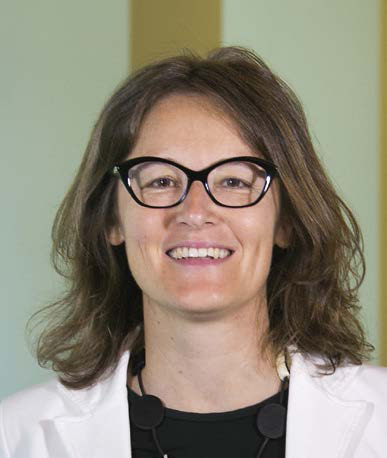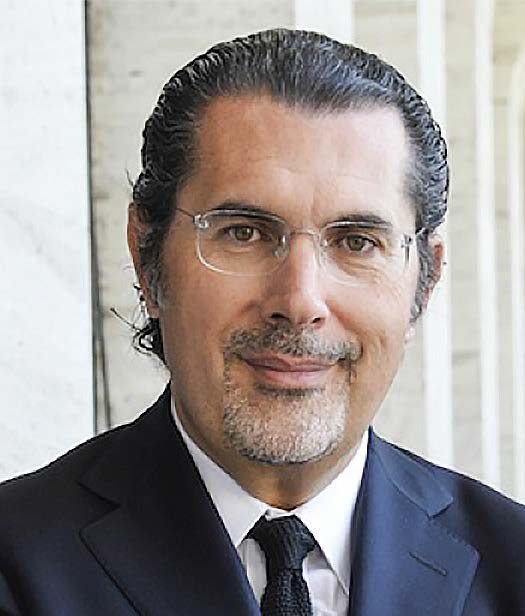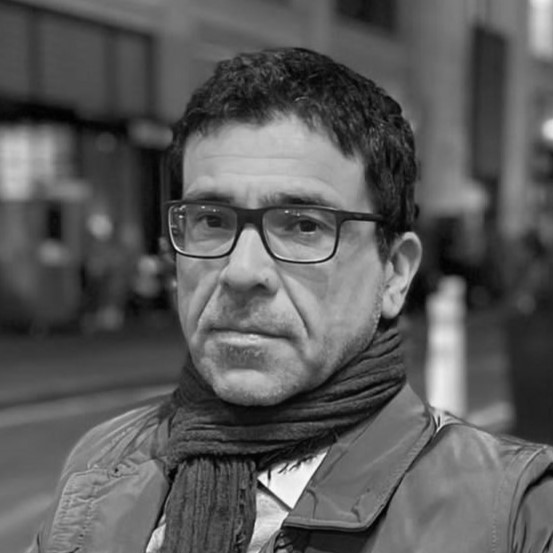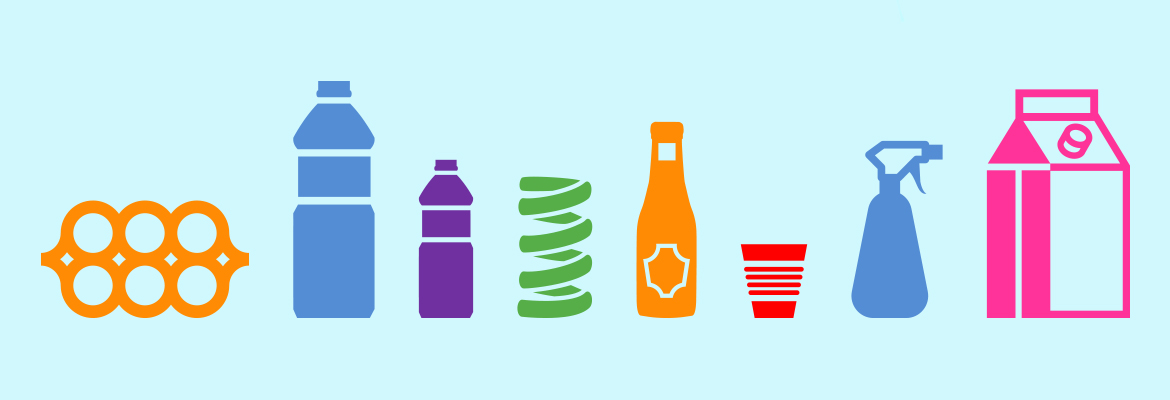We can already find it in shopping bags, in many vehicle components, in toys and in food packaging. It’s bioplastic. Plastic that is not derived from oil but, in different percentages, from organic sources. According to a survey conducted by the European association of bioplastic producers, nova-Institute for European Bioplastic, its market is going to experience a 20% increase over the next five years. The German research centre estimates that the total yearly production of bioplastic will increase from 2,05 million tonnes in 2017 to 2,44 million tonnes in 2022.
Today, less than 1% of the 320 million tonnes of plastic produced every year worldwide is of organic origin, but demand is destined to grow thanks to the development of increasingly sophisticated and innovative biopolymers. These are mostly PLA (polylactic acid) and PHAs (Polyhydroxyalkanoates), but also biopolymers that make use of corn-starch like Mater-Bi or Bioplast, with which biobased and biodegradable plastics are produced.
The largest portion of this growing pie is being disputed between big chemical companies like Basf, Braskem and Total-Corbion. However, there are also companies getting involved that are totally focused on bioplastic, like the Italians Novamont and Bio-on, the American NatureWorks, the German Biotec, the British Biome Bioplastic and the Dutch Avantium, that have created a joint-venture called Synvina with BASF.
The dissemination of bioplastic involves many different sectors, including: packaging (in 2017 60% of the total production of bioplastic, around 1.2 million tonnes, was employed in this sector), catering, consumer electronics, the automotive industry, agriculture, toy industry and textiles.
What are biopolymers
Biopolymers are polymers prepared through biological processes that guarantee a highly biodegradable final product.
They can be extracted from renewable materials of plant origin, like starch and starch mixtures, or they can be produced through chemical synthesis, using biological and renewable monomers such as polylactic acid (PLA) or polyester. On the other hand, Polyhydroxyalkanoates (PHAs) are reserve polymers synthesized by bacteria to store carbon and energy. They can be found inside bacterial cells, accumulated in the form of granules.
The new biobased polymers
Bioplastic growth is driven mainly by PLA and PHAs. The former, whose production capacity should see a 50% growth by 2022, is a very versatile material, suitable for many different applications, from packaging to fibres. According to experts its very high performance specifications make it an excellent substitute for polystyrene (PS), polypropylene (PP) and acrylonitrile-butadiene-styrene (ABS) for more demanding uses. For example, ABS is the kind of plastic used to produce the popular LEGO bricks, yet the Danish toy manufacturer has announced that by 2030 it will produce its toys using bioplastics only.
On the other hand, PHAs are an important family of polymers that have entered the market more recently, and whose production capacity has the potential to triple in the next five years. These polyesters are 100% biobased, biodegradable and have a wide range of physical and mechanical properties.
Today 56% of the world’s bioplastic production capacity (1.17 million tonnes) consists of biobased plastic that is non-biodegradable, including the so-called drop-in solutions like biobased polyethylene (PE), polyethylene terephthalate (PET) and polyamides (PA). The nova-Institute survey estimates that the production of biobased polyethylene will continue to grow as new facilities with a higher productive capacity become available in Europe. Instead, investments will shift from PET to PEF (polyethylene furanoate), a new polymer that should enter the market in 2020. PEF is similar to PET but it’s 100% biobased and shows higher thermal and barrier properties, making it the ideal material for drink and food packaging. It is no coincidence that in 2011 the Dutch company Avantium, responsible for developing PEF, singed a commercial partnership with Coca-Cola.
Another material that will enter the market before 2020 is biobased polypropylene (PP). PP has a high growth potential thanks to its wide range of potential applications in different sectors. Finally, there is biobased polyurethane (PUR): an important group of polymers with huge production capacities and a consolidated market that, thanks to its versatility, should grow faster than conventional PUR.
The big players
One of the biggest producers of biopolymers in the world is the Brazilian group Braskem, whose product portfolio includes polyethylene resins (PE), polypropylene (PP) and polyvinyl chloride (PVC), as well as basic petrochemicals like ethylene, propylene, butadiene, chlorine, benzene, toluene etc. As of 2010 this South American company has become a world leader in the bioplastic market, thanks to the development of a product called “I’m Green.” This is polyethylene produced from renewable sources (derived from sugar cane), and is the result of cooperation between Campinas State University (Unicamp) and the São Paulo State Research Foundation (Fapesp) for the promotion of research on biopolymers and polymers from renewable resources, which started in 2008.
Another company operating in the USA is NatureWorks, a joint venture between the US corporation Cargill and the Thai company PTT Global Chemical. NartureWorks has its headquarters in Minnesota, and markets monomers and biopolymers called Ingeo; these are derived from 100% natural renewable resources. They claim that: “In the production of Ingeo (a PLA polymer) we save 60% of greenhouse gas emissions and use 50% less non-renewable energy compared to traditional polymers such as PET or polystyrene.” Ingeo’s main uses include filaments for 3D printing, durable items, films, paper coatings, cups and food packaging, fabrics, wet wipes, disposable materials and base materials for many chemical compounds.
In Europe the PLA market involves a joint-venture between the French oil giant Total and the Dutch chemical company Corbion. Total Corbion PLA is building a polymerisation plant in Thailand, with an annual capacity of 75,000 tons. The opening is scheduled for the second half of 2018, and the plant will produce an entire range of clean PLA resins under the brand Luminy: ranging from standard PLA to specific heat-resistant PLA.
“In the fast-growing bioplastic market – says Stéphane Dion, CEO at Total Corbion PLA – our new company is committed to offering an innovative and versatile material, that will be biobased and biodegradable, and will guarantee added value to customers and contribute to a more sustainable world, for us and for future generations.”
The German corporation from Ludwigshafen, Basf, has also been looking into this market with interest. They are engaged in research and manufacturing of compostable biopolymers from renewable resources, and have already launched the bioplastic Ecovio. Ecovio is certified compostable according to international standards and at the end of its use life can be sent to industrial composting plants. Basf declares that “When subjected to the characteristic conditions of composting plants, Ecovio undergoes a process of biodegradation thanks to microorganisms, and in a few weeks it becomes compost and can be used to improve soil fertility.”
The main areas of use, for this made in Germany bioplastic, are bags for the collection of organic waste and shopping bags. Moreover, since it meets EU requirements for materials in direct contact with food, it can have many other uses such as paper and cardboard coating, disposable cups, plates, or even food containers and plastic films used for “mulching” in agriculture.
Further proof of Basf’s interest in bioplastic is Synvinia, the joint venture created in 2016 with Avantium to produce and market furandicarboxylics acid (FDCA) from renewable resources (fructose derived from plants), and polyethylene furanoate (PEF), whose constituent element is precisely FDCA, and has better barrier properties (for retaining gasses like carbon dioxide and oxygen) than conventional plastic materials. Its use can therefore guarantee a longer durability of packaged products, and hence is ideal for the production of food and beverage packaging, for example plastic films and bottles. Moreover, PEF can be recycled after use.
Bioplastic in the circular economy
According to the European Commission, every year citizens in the Old Continent generate 25 million tonnes of plastic waste, of which less than 30% is collected for recycling. Only 5% of the value of plastic used for packaging stays in the economic cycle, whereas the rest is lost after a very short first-use life. This means that every year the bill amounts from 70 to 105 billion euros. Last December, this enormous amount of waste pushed the European Commission to introduce its own strategy for plastic in the circular economy, establishing clear objectives to reduce plastic waste, increase resource efficiency and generate employment in Europe. However, European Bioplastics complains about the lack of a unified and global approach on the issue of plastic, pointing out that all the attention is focused on mechanical recycling.
According to the bioplastic producers’ association “concrete steps towards the reduction of our dependency on fossil fuels, by connecting the circular economy with the bioeconomy and supporting innovative solutions based on biobased plastics, have been further delayed: the contribution of biodegradable plastic to the circular economy has been recognised, but real measures are still missing.”
“Plastics obtained from renewable resources are a sustainable alternative to many plastic products” claims François de Bie, president of European Bioplastic. “If on the one hand, increasing the content of recycled plastic is important to reduce that of virgin raw materials, on the other the use of alternative sustainable raw materials, such as biological raw materials, must be encouraged in order to free the economy of fossil fuel derived plastic.”
Therefore, the European bioplastic discourse is ongoing. The next step is for the European Commission to introduce a new strategy on the bioeconomy before next October, as an update to the one that was launched in February 2012.
Bio companies
Alongside the chemical based corporations participating in the multifaceted world of bioplastics, there are a few companies that can be defined as genuinely biobased realities, such as Novamont and Bio-on, Biome Bioplastics and Bioplastic.
Novamont has its roots in the Montedison School of Materials Science. In the 80s this school created the Fertec research centre, with the aim of integrating chemistry and agriculture, and contributed to Novamont becoming a leading industrial reality in the field. The bioplastic developed by Novamont, under Catia Bastioli’s leadership, is marketed under the brand name Mater-Bi. Mater-Bi is derived from OGM free corn starch and plant based oils that are grown using traditional farming techniques in Europe.
Mater-Bi has characteristics and properties of use that are similar to traditional plastics, whilst remaining biodegradable and compostable according to European regulations. The Italian based company from Novara, underlines that this “allows for an optimisation of the management of bio-waste and reduces its environmental impact, contributing to the development of virtuous systems with relevant advantages along the whole production-consumption-disposal cycle.”
Another Italian based company, this time coming out of Bologna, is Bio-on. Since its beginnings in 2007 Bi-on has been extremely dynamic. It operates in the sector of biotechnologies applied to commonly used materials, creating products and solutions that are either derived from 100% renewable resources, or obtained from agricultural waste. The company led by Marco Astorri, develops a bioplastic that is based on PHAs biopolymers and can have multiple industrial applications: from plain packaging to food packaging, to design objects, clothing and vehicles, as well as cosmetic and biomedical uses.
Bio-on, which started purely as a technology provider, announced the construction of a production plant in Castel San Pietro Terme, near Bologna, just last year. This new facility will produce special 100% natural and biodegradable PHAs polymers, that will be used mainly in the cosmetic industry.
Biome Bioplastics was born in 2007 thanks to a British Biome Technologies initiative. The Southampton based company is listed on the London Stock Exchange and managed by Paul Mines. Under his leadership they have created and marketed a new bioplastic made from the lignin contained in the waste pulp produced by paper mills. This new ecological plastic is extremely resistant to high temperatures, biodegradable and compostable. It makes use of a specific substance (synthesised in laboratories) that can be found in the stomach of termites, and that can break down lignin in a way that allows for the production of sustainable plastic polymers.
In contrast, Biotec was born in the far-off 1992. Beginning as a Research and Development company it has now become one of the main players in the bioplastics market. This German company, from Emmerich am Rhein, owns more than 200 patents and deals with the development and production of sustainable bioplastics from renewable plant sources. Their bioplastics, which are of both flexible and hard varieties, can be applied to a series of products, from garbage and shopping bags to medicinal capsules, blister packaging for the food industry or cosmetic packaging. Currently Biotec produces a new generation of customised thermoplastic materials with various functional properties and 100% biodegradability, under the brand name Bioplast.
European Bioplastics, www.european-bioplastics.org
Novamont, www.novamont.com/eng
Bio-on, www.bio-on.it/index.php
Biome Bioplastics, biomebioplastics.com
Biotec, en.biotec.de

Interview with Giulia Gregori, strategic planning and institutional communication manager at Novamont S.p.A.
by M. B.
We Need to Identify a Coherent and Integrated Path
What are the possible applications of Novamont Mater-Bi and what will its next developments be?
“Mater-Bi is a family of bioplastics obtained with plant based raw materials that are totally biodegradable and compostable. It’s used in a wide variety of applications where, thanks to its characteristics, it can contribute to solve specific environmental problems such as pollution and the consequent disposal of organic waste in landfills. These include: bags for separate organic waste collection, bags for take-away and for fruit and vegetables, food packaging, cutlery for big events and canteens. Another sector in which bioplastics play a fundamental role is agriculture, due to the fact that they biodegrade in the soil without releasing toxic substances and compromising fertility. There are also other specific applications where the risk of accidental release in the environment is very high, like in fishing gear.
Over the course of time we have dedicated our research to the progressive increase in renewable raw materials content in Mater-Bi, with a logic of integration at the base of our technologies. We continue to work in this direction. We also work towards constantly improving the technical and environmental performance of our products, and widening the range of possible solutions, aiming especially at applications that are related to food packaging.”
How does bioplastic fit in the circular bioeconomy paradigm?
“Mater-Bi bioplastics fit in the circular bioeconomy paradigm because they contribute to increasing the quantity and quality of organic waste collected, which then becomes compost for fertilising soil, hence closing the carbon cycle. Moreover, circularity is not applied exclusively to the product, but to the whole development model that is based on the concept of territorial regeneration. In fact, we promote the use of plant based raw materials that require a low input, are grown on marginalised land and that can be used up entirely, minimising waste.
We apply our proprietary technologies in the re-industrialisation of former productive sites, contributing to the creation of new value and employment, as well as the regeneration of entire areas from the economic, social and environmental point of view.”
What is your assessment of the Strategy on plastic in the circular economy introduced by the European Commission? What do you think should be modified or integrated?
“The Strategy on plastic could represent a step forward in the direction of a more efficient and sustainable use of resources and towards a shift from a linear economic model to a circular one that is free from waste. However, in order for this strategy to contribute efficiently to the achievement of these ambitious targets, a coherent and integrated path for bioplastics has to be identified, acting on aspects like: the definition of the sectors bioplastics can bring advantages to, identifying tools that can improve market conditions, and enhancing the dissemination of biodegradable and compostable food packaging.”

Interview with Mariagiovanna Vetere, Global Public Affairs Manager at NatureWorks
by M. B.
The EU Must Acknowledge the Value of Bioplastics
What makes PLA different from other kinds of bioplastics today? What developments are you working on?
“Ingeo, the PLA (polylactic acid) we produce, is a fully biobased and compostable polymer. It is different from other polymers because of its extreme versatility, and therefore has several potential areas of application, from fibres and packaging, to filaments for 3D printing. We are also working on the development of fibres with a high absorption capacity that when used in diapers (in the top layer that is in contact with the skin), lower the risk of allergic reactions and irritations significantly.”
How does bioplastic fit into the circular bioeconomy paradigm?
“Bioplastic, thanks to its adaptability to multiple end of life solutions, from recycling to composting and anaerobic digestion, is perfectly compatible with circular economy principles. One example is the life cycle guaranteed by composting, where the use of bioplastics fosters the separate collection of organic waste, increasing the production of compost and improving soil fertility. I can’t think of a better circularity than that of carbon when it’s captured by plants, transformed into bioplastic and finally returned to the soil and the atmosphere to nourish new plants.”
What is your assessment of the Strategy on plastic in the circular economy introduced by the European Commission? What do you think should be modified or integrated?
“The Strategy on plastic is an ambitious proposal: it deals with the subject from different angles and offers many interesting solutions. However, it only focuses on traditional plastic recycling, neglecting the importance of composting in the circular economy. Lastly, once again there’s no clear connection between bioeconomy and circular economy, and therefore no acknowledgement of the value of plastics from renewable sources.”

Interview with Marco Astorri, Co-founder and CEO of Bio-on
by M. B.
PHAs: High Performance Biopolymers
What are PHAs, and what makes them different from other bioplastics?
“Polyhydroxyalkanoates (PHAs) are biopolymers with thermo-mechanic, physical and rheological properties that are superior to those of other bioplastics, and enable high performances and new applications.
They represent a wide class of thermoplastic polyesters that include more than 100 polymers produced from different starting monomers, with a very wide range of properties. We are therefore talking about an easily processable technological platform that guarantees properties comparable to those of conventional plastics; both those derived from petrol, such as polypropylene (PP), and from gas, like polyethylene and others. PHAs are derived entirely from natural sources through fermentation processes using waste (residuals and other by-products from different agro-industrial sectors), as raw matter and not food like other biopolymers; guaranteeing not only compostability, but also a complete and natural biodegradability in water and soil. Moreover, their great advantage is that they are biocompatible and bioabsorbable by the human and animal body, and this opens them up to a massive and interesting variety of fields of application.”
What are the applications you are working on?
“With Minerv BioCosmetics we are developing a program aimed at substituting polymers in cosmetic formulations, an extremely promising sector where PHAs can take a leading role. Recently, we have also presented a project for fertiliser coating (U-COAT), that contributes to: the development of biopolymers for the production of glasses; the Minerv Supertoy program for new formulas for toys; BioRemediation to clean hydrocarbon from the sea; and MinervBiomeds that aim to substitute contrast dye and aid the development of theranostics.
Many other applications are reaching the final stage of development, and in the next few months we will illustrate their new and revolutionary uses.”
What is your prediction for the bioplastics market and what are your next steps going to be?
“In general we think that the polymers market will grow significantly. Demand is constantly increasing, and the recent controversy over oil derived plastic has fuelled demand even further.
Bio-on is always more devoted to developing the market for special applications, that has very promising numbers and characteristics, and requires high quality performances that PHAs can guarantee.”



